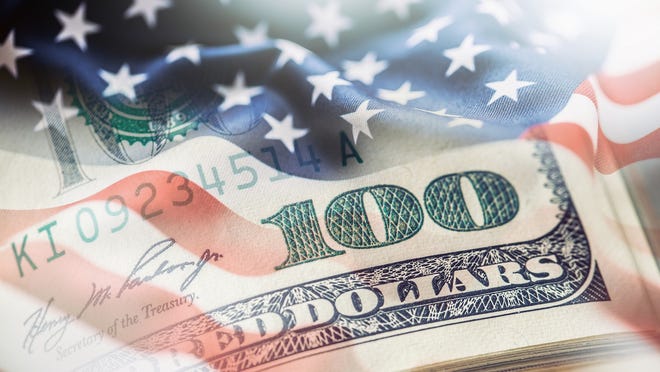The US economy’s rebound from the pandemic has pushed its May inflation reading to a 12-year high. The American consumers absorbed another surge in prices in May — a 0.6 percent increase over April and 5 percent over the past year, the biggest 12-month inflation spike since 2008.
Reason: Central bankers slated the increase in inflation to a combination of pent-up demand as economies unlock and supply bottlenecks. Easy monetary policy is also pushing up prices since it fuels demand without boosting supply.
The Federal Reserve has maintained its key interest rate near zero since the coronavirus outbreak. It is also spending $120 billion a month in buying treasury and mortgage bonds. The central bank will not raise the interest rates unless the economy records inflation above 2 percent consistently and the labour market has returned to maximum employment.
Significance: The CPI numbers from April intensified concerns of rising inflation numbers, something that would be hard to contain. The May numbers further stoked those fears.
Inflation numbers play a psychological role for both investors and consumers. If they expect the prices to rise, they will continue buying. This will further push the prices higher.
Breaking-down: However, the prices of all commodities did not increase in tandem. Per the numbers,
— Food prices are higher by 0.4 percent in May as compared to April and 2.2 percent higher year-on-year.
— Energy costs are higher by 28.5 percent year-on-year.
— Clothing and apparel prices have gone up by 5.6 percent year-on-year.
— Medical products was the only category to witness a decrease of 1.9 percent year-on-year.
Comparing with estimates: The CPI numbers were slightly higher than what economists estimated. According to them, the CPI would grow by 0.4 percent month-over-month, and 4.7 percent, year-on-year.
Global markets react
Investors are not particularly worried, yet. The markets largely shrugged off the higher-than-expected inflation numbers and registered gains.
Wall Street: Stocks on Wall Street edged higher as S&P 500 etched a new record, climbing 0.5 percent. The Dow Jones Industrial Average added 0.1 percent. And the technology-focused Nasdaq jumped 0.8 percent.
Treasury yields: The yield on 10-year Treasury notes slipped to 1.458 percent – lowest level in over three months. According to analysts, Fed’s persistence to keep the monetary policy accommodative is dragging yields down.
Click here and here to read how treasury yields impact India’s economy.
Dollar: As investors digested elevated inflation numbers, the dollar index alternated between losses and gains. Late Thursday, the index fluctuated narrowly around the psychologically important 90 levels and was down 0.08 percent.
Asian stocks: A broad gauge of Asian shares rose on Friday, with MSCi’s broadest index of APAC shares (outside Japan) was trading in the green, as did Seoul’s Kospi, Australia’s S&P, and Hong Kong’s Hang Seng. However, in early morning, Japan’s Nikkei and China’s blue-chip shares were trading in the red.
Gold: Gold prices edged higher after the data showed higher than expected CPI numbers. On Thursday, at 11:30 pm, the spot gold was trading 0.3 percent higher at $1,893 an ounce. And the US gold futures settled at $1896 an ounce.
Dalal Street: Indian shares opened with record-highs on Friday, as falling coronavirus cases and higher inflation numbers allayed investor’s fears.
Analysts react
Major analysts believe the spike in inflation is transitory, but a sustained spike could spell trouble for markets and major banks.
Speaking to CNBC, the Chief Financial Officer of Goldman Sachs, Stephen Scherr said: “We are seeing inputs to the likes of automobiles and the like … being pinched, but that’s a transitory element in terms of what may play out.” He further added that the risk of inflation is low, but it is certainly not “off the table.”
Bank of Canada says inflation could remain higher than projected if the supply imbalances and pressures on capacity persist.
The bank believes supply bottlenecks and container shortages are temporary. However, if such issues persist, then “we could actually see inflation above target in a more persistent manner.” And that would be a cue for the Federal Reserve to tamper with the easy monetary policy.
Currently, the central bank is dismissive of the numbers, which is why market participants don’t expect the bank to react in the upcoming Federal Open Market Committee meeting next week.







Leave a Reply